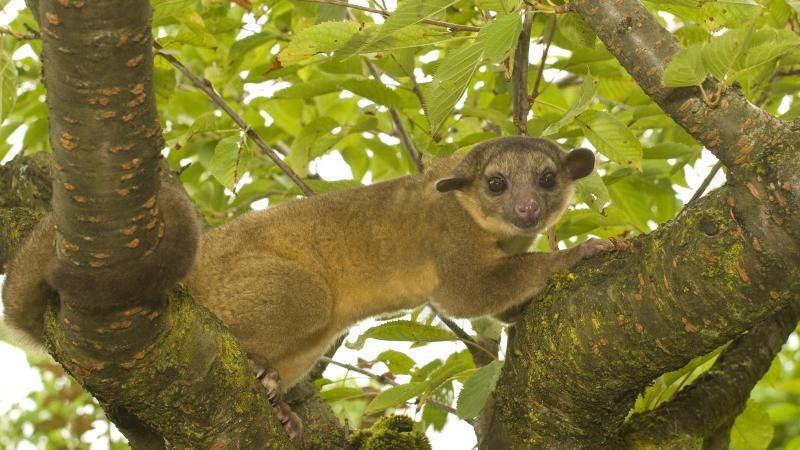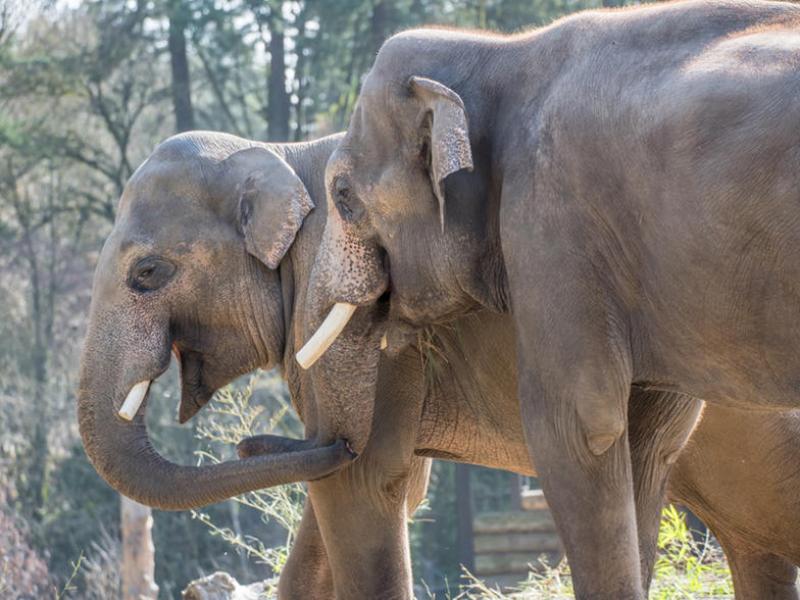
Kinkajous are rainforest mammals that live in a variety of forest habitats in Central and South America, from southern Tamaulipas state in Mexico south to southern Brazil. They are frugivores (fruit-eaters). Kinkajous are in the same family as raccoons, coatis and ringtails.
Kinkajou behavior and facts
- Kinkajous are opportunistic frugivores, eating whatever fruit is abundant. Figs are a favorite. They may supplement their diet with insects, flowers and nectar depending on what is available.
- They are arboreal (living in trees). Their long, prehensile tail and nimble, clawed fingers, are adaptations for life in the trees. Kinkajous can hang upside down while feeding, using their prehensile tail and hind legs for support while holding small fruits in a one-handed grasp.
- They are nocturnal; they spend the day sleeping in dens, often in the crotch or hole of a tree, usually with other kinkajous. At dusk, they groom each other and socialize before separating to forage alone in fruit trees.
- Social groups usually contain two adult males, an adult female and offspring.
- Predators include eagles, jaguars and humans.
From birth to death
- Gestation: 98 to 120 days
- Offspring: 1 to 2, weighing 6 ounces each
- Wean: 8 weeks; by 4 months they are independent.
- Sexual maturity: females 27 months; males 18 months
- Lifespan: 29 years; up to 40 years in captivity
Vital statistics
- Weight: 4.5 to 10 pounds
- Length: 32 inches
Status
- IUCN Red list: Least concern
- CITES: Appendix III
Kinkajous, the Oregon Zoo and you
They are hunted for their meat and thick, soft fur but are not currently threatened.




